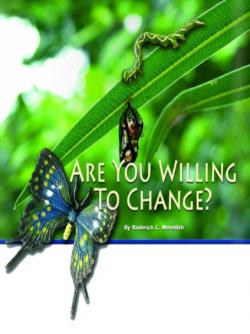San Francisco Earthquake: Lessons 100 Years Later
April 2006 marks the hundredth anniversary of an earthquake that ravaged a city and changed the way Americans came to think about disaster preparedness. Many lessons were learned following the devastating quake—but were they the right lessons?
"It was on the morning of April 18, 1906. The sun was just peeping from behind the hills and casting a beautiful mantle of crimson o'er the Queen of the Pacific Slope. A few had begun to stir and prepare for their daily duties… when suddenly the earth began to tremble…"
That is how Edith Weatherred, a reporter for the Portland Evening Telegram, described her firsthand experience when the city of San Francisco endured an earthquake that history would recognize as one of the most terrible natural disasters ever to shake the United States.
Weatherred described the chaos and panic of a city devastated by tremors and fires. "Rushing to the streets, we saw flames from more than a dozen fires enveloping whole blocks. Fire bells were ringing and horses madly rushing on to the fast approaching flames, only to find water mains disabled. Hydrants had been twisted out of shape, and the water supply entirely cut off. Through the dense smoke came the message, 'God save us! The city is doomed.'"
Many other eyewitness accounts of this devastating earthquake have been preserved. Writer Jack London lived just 40 miles away. He rushed to the city when he heard the news, and recorded what he saw: "Nothing remains of it but memories and a fringe of dwelling-houses on its outskirts… There was no opposing the flames. There was no organization, no communication… The telephone and telegraph systems were disrupted. And the great water-mains had burst. All the shrewd contrivances and safeguards of man had been thrown out of gear by thirty seconds' twitching of the earth-crust... Not in history has a modern imperial city been so completely destroyed. San Francisco is gone" ("The Story of an Eyewitness," Collier's, May 5, 1906).
The desolation of San Francisco was beyond words. In 45 to 60 seconds of tremors, and three days of fires, 28,000 buildings were destroyed and 225,000 people were left homeless. An estimated 3,000 people lost their lives. Property damage reached $400 million (in 1906 dollars). The fire destroyed four square miles of San Francisco—roughly two-thirds of the city.
On today's Richter scale, the quake measured 7.7 to 7.9—nearly 100 times as intense as the terrible earthquake that struck Northridge, California on January 17, 1994. But scientists do not consider either the size or the scope the most significant fact about San Francisco's great calamity. Rather, they note the lessons learned as a result of the earthquake! A U.S. Geological Survey scientist observed: "The California earthquake of April 18, 1906, ranks as one of the most significant earthquakes of all time. Today, its importance comes more from the wealth of scientific knowledge derived from it than from its sheer size" (see "The San Andreas Fault System, California," USGS Paper 1515, pp. 152–187).
In the decades after 1906, scientists learned much about earthquake science and preparedness. The lessons they learned have saved lives in recent years. Just what were those lessons learned?
Effects of the Quake
After the 1906 quake, scientists flocked to observation posts along California's San Andreas fault to study how the earthquake had affected it. In some places, the two sides of the fault were dislocated by some 16 feet! Once believed to be just a small fault localized south of San Francisco, the 1906 San Francisco earthquake revealed that the fault was much larger than previously believed. After the quake, scientists observed displacement that ran for 290 miles—from northwest of San Juan Bautista to Cape Mendocino along the northern California coast. This discovery spawned scientific study that challenged prevailing concepts about the structure of the earth's crust, and about the nature of earthquakes themselves. Before, scientists believed that earthquakes "caused" faults. After 1906, scientists discovered that it was faults that "caused" earthquakes (or foretold their location)—not the other way around! This discovery eventually led to the "elastic-rebound theory," which remains the principal model used to this day to describe the movement of the earth's crust by earthquakes. Far from being insignificant, as previously thought, the San Andreas fault is today the most studied fault line in the world, known to stretch for 800 miles—from Point Arena on the northern California coast to the Gulf of California in the south.
The 1906 earthquake also prompted sweeping changes in San Francisco's building codes. Those new standards have spared the city from much devastation during the past 100 years. As U.S. News & World Report writer Kim Clark put it: "Many lessons were learned in the 1906 earthquake and fire that killed about 3,000 people. The city imposed stricter building codes, which were put to the test on Oct. 17, 1989, when a magnitude 7 earthquake struck. At first, the destruction looked horrific. But out of a Bay Area population of nearly 7 million, only 62 people died, about 3,500 were injured, and 12,000 were left homeless. The economic losses were also comparatively light" ("New Warnings, Old Risk," September 19, 2005).
But were plate tectonics and the earth's movement the most important lessons of the 1906 San Francisco earthquake? Were modernized building regulations its most significant effect? Or were we supposed to learn other lessons from what took place on that fateful April morning 100 years ago?
San Franciscans are making plans to commemorate the quake's anniversary, and to celebrate the strides society has made since then in earthquake research and preparedness. But what are the lessons that all human beings—not just San Franciscans—should learn? How should those lessons affect us when we are faced with increasing calamities and natural disasters in the "end-times"?
Global Warming or Global Warning?
Jesus Christ warned that earthquakes—and other natural disasters—would be among the prophetic milestones signaling His soon return. "Now as He sat on the Mount of Olives, the disciples came to Him privately, saying, '"Tell us, when will these things be? And what will be the sign of Your coming, and of the end of the age?''' (Matthew 24:3). Jesus foretold not only political and religious upheaval, but also unexpected and increasing climactic disasters. "And there will be famines, pestilences, and earthquakes in various places. All these are the beginning of sorrows" (vv. 7–8). Jesus forewarned that the years just before His return would be marked with great sorrow and grief, as a result of man-made wars and "natural" calamities. Are we entering that time?
Skeptics counter, "We've always had earthquakes—there's nothing unusual or significant about disasters." But commentators on climactic events in recent years have acknowledged that our weather is becoming more unusual, extreme, and unpredictable. Last December 30, Knight-Ridder reporter Seth Borenstein looked back on 2005 weather patterns, and noted: "It's not just your imagination. America's weather went wild this year. It began with a record downpour in the Nevada desert and record warmth in Alaska, and it's ending with floods in California and wildfires in Texas and Oklahoma… Along the way, at least 214 climate records were smashed or tied, thanks to a slew of hurricanes, [and] 21 straight days of 100-degree-plus temperatures in Fresno, California… Extremes were everywhere… It was the third worst year for U.S. extreme-weather events in history, according to the National Climactic Data Center in Asheville."
While one year's weather does not by itself signal dramatic climactic change, experts now say that they expect this type of weather from year to year. The U.S. is not alone in this. "Although Canada was spared the brunt of the world's worst disasters—which included deadly hurricanes and destructive earthquakes elsewhere on the globe—residents of this country had plenty to gripe about [in 2005]. A cluster of major storms caused flooding in Alberta that was labeled a once-in-200-years occurrence… Mr. [David] Phillips, [senior climatologist for Environment Canada]… has argued repeatedly that weather was generally more extreme and less predictable this year" ("Mother Nature was mad at the world," Globe and Mail Update, December 29, 2005).
This is not even to mention the 7.6-magnitude earthquake in Pakistan on October 8, 2005, which killed more than 73,000 people and left three million homeless, or the Southeast Asian tsunami caused by a 9.3-magnitude monster earthquake on December 26, 2004—the strongest in 40 years—which killed nearly 300,000 people. Is our extreme weather the result of global warming or other physical causes? Or is there a Creator God who will use unusual weather events, including earthquakes, to bring all of humanity to repentance and an acknowledgement of the existence of an all-powerful God?
Not Just Building Codes
Better engineering standards and civil emergency drills are of course helpful, but are they the best ways to prepare for coming calamities? Do you have an emergency plan to protect yourself and your family if a calamity strikes? In the U.S., the Federal Emergency Management Association has issued recommendations for family preparedness at home. These include simple measures such as having enough usable food and water for three to seven days (a gallon of water per person per day), adequate clothing and bedding, tools and emergency supplies, flashlights and fresh batteries, a battery-operated radio, cash and a full tank of gasoline ("Your Family Disaster Supplies Kit," Publication L-189).
However, even more importantly, Jesus Christ revealed that spiritual preparation is the most important way to plan for disasters of any kind, including natural calamities. Ignoring this vital key will bring catastrophe to nations or individuals. Notice what Christ said when describing wise and foolish builders: "Therefore whoever hears these sayings of Mine, and does them, I will liken him to a wise man who built his house on the rock: and the rain descended, the floods came, and the winds blew and beat on that house; and it did not fall, for it was founded on the rock" (Matthew 7:24–25). While this is good, sound building advice, the real lesson is spiritual! "But everyone who hears these sayings of Mine, and does not do them, will be like a foolish man who built his house on the sand: and the rain descended, the floods came, and the winds blew and beat on that house; and it fell. And great was its fall" (vv. 26–27).
Jesus Christ showed that the best preparation for future disasters is a close relationship with Him! "And there will be great earthquakes in various places, and famines and pestilences; and there will be fearful sights and great signs from heaven… But take heed to yourselves, lest your hearts be weighed down with carousing, drunkenness, and cares of this life, and that Day come on you unexpectedly" (Luke 21:11, 34). As we see nations grappling with tragedy and fellow human beings fighting for survival in the wake of terrifying calamities, are we becoming more serious about our spiritual lives? Or are we focused on making money, paying the bills, pursuing pleasure and pleasing our peers, to the exclusion of our relationships with God?
More and more people in the U.S. and the British-descended nations are becoming concerned about the moral direction of their countries, and are seeing natural disasters as a "wake-up call" for spiritual renewal. But will this be a temporary emotional reaction? Or will it become something more? How many are really serious about turning to God?
Hurricane Katrina saw more than 1,300 people killed, thousands still missing, and 1.5 million displaced. Some have called it the U.S.'s worst disaster since its Civil War. But has it brought about a widespread movement toward greater obedience and dependence on God and His word? Local officials in New Orleans see the resurgence of Bourbon Street as a vital sign of the survival of New Orleans, despite the bawdy and sensual lifestyle it represents (see "Bourbon Street survives storm," Appeal-Democrat, October 2, 2005). Gulf Coast legislators are counting on rebuilt casinos to jump-start their battered economies, and are even changing laws to accommodate them—despite the known social and moral ills associated with the gambling industry ("Bright Spot on Gulf as Casinos Rush to Rebuild," New York Times, December 14, 2005). Have the real lessons been learned?
No matter what society does as a whole, it is up to each of us individually to make permanent changes in our lives, according to God's word, as we see the "writing on the wall." Jesus certainly intends us to! Notice what He said about the growing chaos and anger in our world around us: "Watch therefore, and pray always that you may be counted worthy to escape all these things that will come to pass, and to stand before the Son of Man" (Luke 21:36).
When Californians speak of "the big one," they usually are thinking about a powerful earthquake that geologists expect will strike their state in the next few decades. But do you realize that Jesus Christ prophesied that a great earthquake of unprecedented power would come and shake every nation on earth? "Then the seventh angel poured out his bowl into the air… And there were noises and thunderings and lightnings; and there was a great earthquake, such a mighty and great earthquake as had not occurred since men were on the earth" (Revelation 16:17–18). This earthquake will be more severe than any previously experienced. Scripture reveals not only that it will affect the whole world, but that it will level cities around the world—including the city at the center of a worldwide false "Christianity" opposing Christ Himself! "Now the great city was divided into three parts, and the cities of the nations fell. And great Babylon was remembered before God, to give her the cup of the wine of the fierceness of His wrath. Then every island fled away, and the mountains were not found" (vv. 19–20).
This devastation will come upon the world's nations and cities in the not-too-distant future. But devastation does not have to come upon you! God is looking for repentance in each of us (Acts 17:30). Now is the time to change personally—forsaking greed, vanity, lust and envy, and wholeheartedly embracing God's way. "If we confess our sins, He is faithful and just to forgive us our sins and to cleanse us from all unrighteousness" (1 John 1:9). Jesus Christ will soon establish His Kingdom on earth, ushering in a thousand years of unimaginable peace and happiness for all of humanity. However, before that, the earth will experience disasters of a magnitude the world has never known. God, in His perfect love, will allow these calamities to come upon a sinful world so that it must acknowledge "that the Most High rules in the kingdom of men" (Daniel 4:25, 32).
What Will You Do?
When Hurricane Katrina drowned New Orleans, Louisiana, in August 2005, and prompted a mass exodus from the city, San Francisco Mayor Gavin Newsom was prompted to address emergency preparations for his own city. Geologists say the odds are high that San Francisco will suffer a "damaging" earthquake (defined as magnitude of 6.7 or higher) in the next 30 years or less ("Is San Francisco Ready?" Time, September 19, 2005). Projects are now underway in San Francisco to "secure vital infrastructure, including the San Francisco-Oakland Bay Bridge and Bay Area Rapid Transit system's tracks, stations and tunnels." Also in progress is "a major renovation of the aging system of reservoirs, pipelines and canals that bring water to some 2.4 million Bay Area residents" (ibid.). Without intact water lines after a disaster, not only would San Franciscans go thirsty; there would be little hope of fighting uncontrolled fires like those that devastated the city in 1906.
But in spite of all these physical preparations, how much spiritual preparation is taking place? Is San Francisco—or are any of our cities—becoming more godly?
Mayor Newsom and other disaster managers frankly admit that citizens cannot rely on government agencies or government disaster plans to protect or save them, especially in the first 72 hours of a catastrophe (ibid.). Sincere Christians know that although we must be prudent and prepare in every way we can (Proverbs 22:3), our only real protection comes from the all-powerful God who rules over earth from heaven, and has our life in His hands (John 10:27–29)! The prophet Jeremiah records this encouraging message, and points out in Whom we can put our trust and faith in times of stress and danger: "Thus says the LORD: 'Cursed is the man who trusts in man and makes flesh his strength, whose heart departs from the LORD. For he shall be like a shrub in the desert, and shall not see when good comes, but shall inhabit the parched places in the wilderness, in a salt land which is not inhabited. Blessed is the man who trusts in the LORD, and whose hope is the LORD. For he shall be like a tree planted by the waters, which spreads out its roots by the river, and will not fear when heat comes; but its leaf will be green, and will not be anxious in the year of drought, nor will cease from yielding fruit'" (Jeremiah 17:5–8). May God lead you to learn the lessons of history and to obey Him wholeheartedly, through the power of His Spirit. May He grant you the faith and trust to depend on Him and His Son, Jesus Christ, for your very life!






